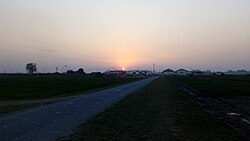
Nainital district is a district in Kumaon division which is a part of Uttarakhand state in India. The headquarters is at Nainital.

Kashipur is a city of Udham Singh Nagar district in the Indian state of Uttarakhand, and one of its seven subdivisions. Located in the western part of Udham Singh Nagar district, it is Kumaun's third most populous city and the sixth most populous in Uttarakhand. According to the 2011 Census of India, the population is 121,623 for the city of Kashipur and 283,136 for Kashipur Tehsil. Kashipur also has IIM Kashipur, one of the thirteen Indian Institutes of Managements the government has set up during the Eleventh Five-year Plan.
Bazpur, or Bajpur, is a city and a municipality in Udham Singh Nagar district in the state of Uttarakhand, India.

Gadarpur is a post independence city and a municipal board in Udham Singh Nagar district in the state of Uttarakhand, India. This city was formed with the arrival of the refugees from Pakistan at the time of partition of 1947. The refugees settled here and started living here. The refugees are Punjabi which makes up a majority in the city.
Ramnagar may refer to the following places:
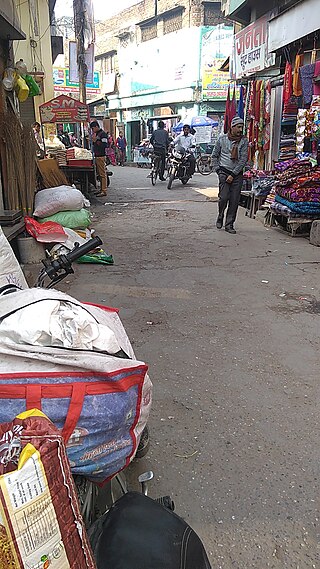
Jaspur is a developing town and a municipal board in Udham Singh Nagar district in the Indian state of Uttarakhand.
Kelakhera is a Municipality Town in Tehsil Bajpur of Udham Singh Nagar district in the Indian state of Uttarakhand.

Khatima is a city and a municipal board in Udham Singh Nagar district in the Indian state of Uttarakhand.

Kichha is oldest tehseel of Udham Singh Nagar district. It is older than Rudrapur city. It has its own municipal board, located in Udham Singh Nagar district, Uttarakhand, India.
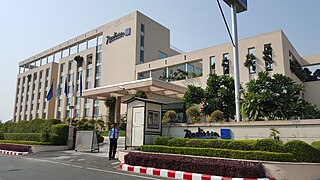
Rudrapur is a city that serves as the headquarters of the Udham Singh Nagar district in the Indian state of Uttarakhand. Located at a distance of about 250 km (160 mi) northeast of New Delhi and 250 km (160 mi) south of Dehradun, Rudrapur is located in the fertile Terai plains in the southern part of Kumaon division over an area of 27.65 km2. With a population of 140,857 according to the 2011 census of India, it is the 5th most populous city of Uttarakhand.

Sitarganj is a city and a municipal board in Udham Singh Nagar district in the Indian state of Uttarakhand. Now it is home to the Integrated Industrial Estate Sitarganj (IIE) being developed by State Industrial Development Corporation of Uttarakhand Limited (SIDCUL).
Buksa, also known as Buksari and Bhoksa, is an Indo-Aryan language spoken by the Buksa people in parts of Uttarakhand and Uttar Pradesh, India.
Kolada (Kiratpur), contiguous with Kolara, is a village Post-Danpur in Rudrapur Mandal, Udham Singh Nagar district of Uttarakhand State, India.
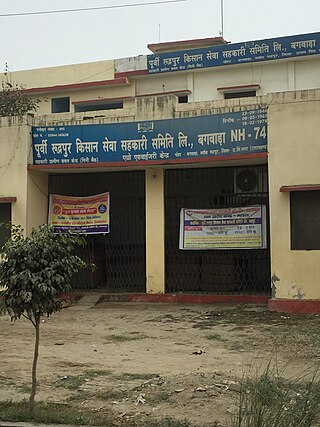
Bigwara is a village and gram panchayat in Rudrapur city, Udham Singh Nagar district in the Indian state of Uttarakhand. Bigwara is located in the fertile Terai region on National Highway 74, 3km milestone from Rudrapur. Since the establishment of SIDCUL, the village has enjoyed rapid development.
Kathangari is a village in Udham Singh Nagar district in the state of Uttrakhand, India, 10km from Sitarganj, 20 km from Kichha and 34km from Rudrapur, on the Sitarganj - Kichha National Highway 74. In the 2011 census of India, kathangari had a population of 896 people.
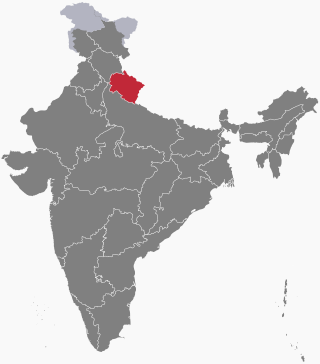
The following outline is provided as an overview of and topical guide to Uttarakhand:
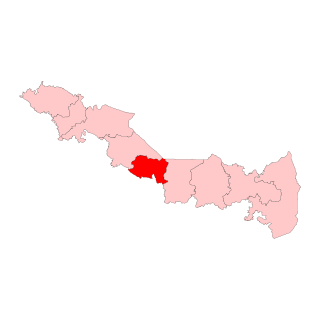
Rudrapur Legislative Assembly constituency is one of the seventy electoral Uttarakhand Legislative Assembly constituencies of Uttarakhand state in India. It includes Rudrapur area of Udham Singh Nagar District.

Gadarpur Legislative Assembly constituency is one of the seventy electoral Uttarakhand Legislative Assembly constituencies of Uttarakhand state in India. It includes Gadarpur area of Udham Singh Nagar District.





